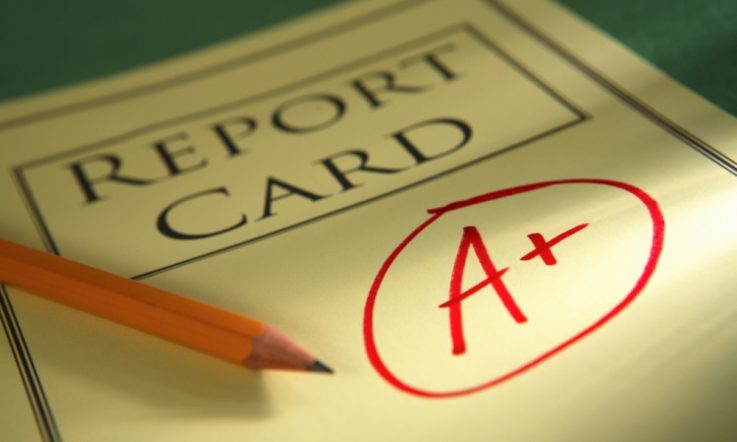This is an edited version of an article that was originally published in the August 2010 print edition of Teacher.
If we over-inflate our students’ self-esteem, we run the risk that the air will quickly come out of the balloon when they hit the wide world, says Stephen Dinham.
We know from research that student self-concept or self-esteem – terms that are used interchangeably in the research literature – can have a moderate to large effect on student achievement, as John Hattie points out in Visible Learning.
It follows that, if this is correct, boosting self-esteem would result in higher levels of achievement. Self-esteem is also seen as important in the contribution it makes to resilience, that capacity to persist in the face of challenge, pressure and disappointment. Many educators have taken this view on board, particularly with students from lower socieconomic backgrounds and minority backgrounds.
The view that educators ought to boost self-esteem typically manifests in schools in four ways:
- avoiding anything that is thought to detract from self-esteem, such as criticism, negative feedback, failing or low grades, reporting on a student’s position in class or year, using red pens on student work and the like
- giving large amounts of ‘positive reinforcement’ through praise, merit certificates, making students feel good about themselves and their culture, making them feel proud and confident
- being over-protective of children, which, as Lenore Skenazy has observed, can result in delayed autonomy and extended parental dependence, and
- providing learning that is ‘fun,’ ‘relevant’ and with a high degree of student choice, which can result in low expectations and ‘dumbing down’ through students not being sufficiently challenged and extended.
This focus on self-esteem, however, is flawed. If we attempt to protect or boost students’ self-esteem in the ways outlined above, we’re doing them no favours and, quite possibly, we’re setting them up for failure and disappointment.
Some schools, especially in low socioeconomic areas, consider themselves ‘welfare’ rather than ‘academic’ schools and believe that the best thing they can do for their disadvantaged clientele is to teach them social and life skills, give them a grounding in the ‘basics’ and make them feel better about themselves. This is a low expectations model that condemns students to low achievement.
Remember Jonah in comedian Chris Lilley’s ABC television series Summer Heights High? Jonah was a low achiever from a Tongan background who acted out in various ways, disrupting his and others’ learning. The school offered Jonah and his compatriots a program called ‘Polynesian Pathways,’ which sought to recognise their cultural identity and boost pride and self-esteem through traditional songs, dancing, stories and so forth. Jonah’s problem, however, wasn’t a lack of cultural pride and identity, but a lack of the literacy skills he needed to progress in schooling. Ironically, the one thing he was good at, breakdancing, was taken away from him for his misdeeds, as I’ve pointed out in ‘The lesson of Jonah’ in 2007.
Other schools, often with students from higher socioeconomic backgrounds, have more of a focus on the ‘academic’ side, being more concerned with results at the expense of the individual. Both views – ‘academic’ and ‘welfare’ – are wrong. Education is riven with such false dichotomies.
My involvement with research into successful teaching and successful schools shows that the best teachers and schools, including those in disadvantaged areas, have a balanced focus on every student as a learner and a person, a fundamental point I make in How to Get Your School Moving and Improving. Their relationship with students is ‘authoritative.’ What do I mean by this? It’s a term used by Diana Baumrind, an adolescent psychologist at the Institute of Human Development of the University of California, Berkeley. Baumrind has provided a useful typology as a result of her work on parenting styles, which Catherine Scott and I examined in ‘Parenting, teaching and self-esteem.’
As Baumrind explains, two dimensions underlie parenting style:
- responsiveness: as she puts it, ‘the extent to which parents intentionally foster individuality, self-regulation and assertion by being attuned, supportive and acquiescent to children’s special needs and demands,’ and
- demandingness: ‘the claims parents make on children to become integrated into the family whole, by their maturity demands, supervision, disciplinary efforts and willingness to confront the child who disobeys.’ Baumrind derives four parenting styles from this typology:
- uninvolved – low responsiveness, low demandingness
- authoritarian – low responsiveness, high demandingness
- permissive – high responsiveness, low demandingness, and
- authoritative – high responsiveness, high demandingness.
The desired style of parenting, according to Baumrind, is authoritative, since, as Scott and I put it in ‘Parenting, teaching and self-esteem,’ ‘authoritative parents are high on both responsiveness and demandingness. They are warm and supportive of their children, aware of their current developmental levels and sensitive to their needs. They also, however, have high expectations, and set appropriate limits while providing structure and consistent rules, the reasons for which they explain to their children, rather than simply expecting unthinking obedience.
‘While they maintain adult authority, authoritative parents are also willing to listen to their child and to negotiate about rules and situations. This combination of sensitivity, caring, high expectations and structure has been shown to have the best consequences for children, who commonly display academic achievement, good social skills, moral maturity, autonomy and high self-esteem.’
Based on the research we had been involved in within effective schools, including those in low socioeconomic areas, we concluded that the typology had equal application to teaching, school leadership and schooling generally. We argued that ‘an authoritative teaching style where high responsiveness is accompanied with high demandingness provides the best model for enhancing both student achievement and self-esteem, and that a preoccupation with building student self-esteem through a permissive approach in the hope that this will translate into student achievement and development is counter-productive.’
We also noted that recent research on schools that are successful in facilitating students’ academic, personal and social development shows that they achieved this through an effective balance between student achievement and student welfare, and pointed out that whether a school might be perceived as being either a ‘welfare’ or ‘academic’ school is a false dichotomy that is unhelpful and indeed damaging.
I’ve noted in How to Get Your School Moving and Improving that I believe we made a fundamental error in education during the 1960s. At the time, schooling was typically authoritarian and as a wave of change moved through society, it was determined that schools needed to be more responsive to students as individuals and that things such as multiculturalism and values education should be included in the curriculum. The mistake we made was seeing responsiveness and demandingness as mutually exclusive – the idea that to be more responsive to students meant we had to be less demanding. Thus, rather than becoming more authoritative, schools became more permissive, in line with changes in society, and we’ve been paying for this error ever since. Having said that, the best teachers and schools have always been authoritative.
They’ve also understood the vital importance of feedback in learning. Hattie, in Visible Learning, points out that feedback from teacher to student can have a large to very large effect on student achievement. Based on my research, as I’ve previously pointed out in ‘Feedback on feedback’ in these pages, I believe students need and want answers to four questions:
1. What can I do?
2. What can’t I do?
3. How does my work compare with that of others?
4. How can I do better?
As I noted in ‘Feedback on feedback,’ ‘Look at learning or mastery in fields as diverse as sports, the arts, languages, the sciences or recreational activities and it’s easy to see how important feedback is to learning and accomplishment. An expert teacher, mentor or coach can readily explain, demonstrate and detect flaws in performance. He or she can also identify talent and potential, and build on these.
In contrast, trial and error learning or poor teaching are less effective and take longer. If performance flaws are not detected and corrected, these can become ingrained and will be much harder to eradicate later. Learners who don’t receive instruction, encouragement and correction can become disillusioned and quit due to lack of progress.’
Some teachers avoid telling students what they can’t yet do and how their work compares to others’ because they feel this sort of feedback will harm students’ self-esteem. I don’t see any harm in this feedback, however, particularly if students also receive feedback on how they can do better, that is, practical assistance on how they can improve their work. In my experience, however, many students don’t receive such advice.
If we want to boost students’ self-esteem, the best way to do this is for every student to be recognised as a learner and a person, and for every student to receive balanced feedback to enable them to achieve in the context of quality teaching and effective schooling.
Every student needs to feel recognised and cared about. Every student needs to experience success and feel that they are progressing in their learning and development. Real achievement, no matter how small, is the best way to engender self-concept and self-esteem. This can then serve as a solid foundation for further achievement. In this way, self-esteem and student achievement affect each other in a reciprocal fashion, but in my experience, achievement is the foundation of self-esteem and must come first. We shouldn’t shy away from the concept of failure. Having failed and then succeeded at something can be a powerful driver for learning and self-esteem.
When students have their self-esteem boosted artificially in inauthentic ways, on the other hand, the air quickly comes out of the balloon when they hit the wide world and meet real-life challenges. In some ways, taking a blow to one’s self-esteem is worse than never having much of it in the first place.
References
Baumrind, D. (1991). The influence of parenting style on adolescent competence and substance abuse. Journal of Early Adolescence. 11(1): 56-95.
Dinham, S. (2007a). The lesson of Jonah. Education Review. 17(8): 5.
Dinham, S. (2007b). Leadership for Exceptional Educational Outcomes. Brisbane: Post Pressed.
Dinham, S. (2008a). How to Get Your School Moving and Improving: An evidence-based approach. Melbourne: ACER Press.
Dinham, S. (2008b). Feedback on feedback. Teacher. 191 (May): 20-23.
Dinham, S. & Scott, C. (2008). Authoritative leadership, school improvement and student accomplishment. Paper presented to British Educational Research Association Annual Conference, Edinburgh, Scotland, 3-6 September. Available at www.leeds.ac.uk/educol/documents/177858.doc
Hattie, J. (2009). Visible Learning. London: Routledge.
Scott, C. & Dinham, S. (2005). Parenting, teaching and self-esteem. Australian Educational Leader. 27(1): 28-30.
Skenazy, L. (nd). Free-range kids: How to raise safe, self-reliant children (without going nuts with worry). Available at: http://freerangekids.wordpress.com
This is an edited version of an article that was originally published in the August 2010 print edition of Teacher. The author biography remains unchanged and may not be accurate at this point in time.



